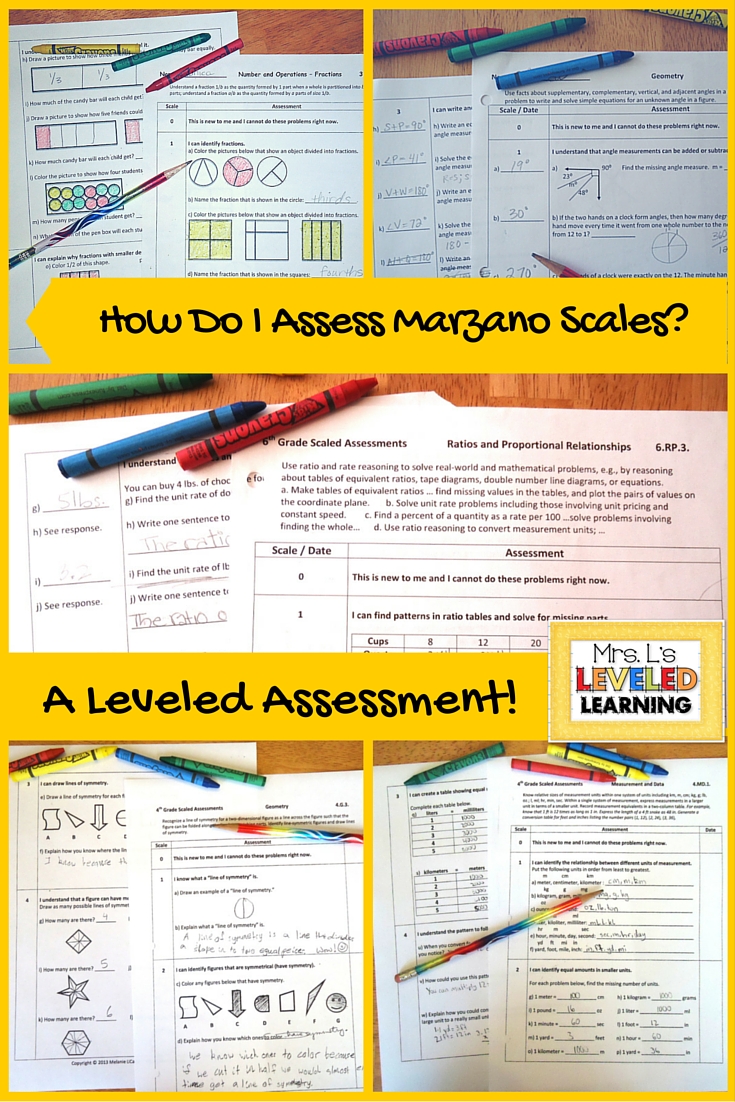Last post I discussed the Pros and Cons of Informal Assessments. This week I am switching to the idea of using formal assessments for Marzano Scales because I found that they were so much more effective! The benefits of formal assessments are that they give you and students a more reliable measure of proficiency for making long-term goals or instructional decisions. Formal assessments may be helpful if you want to decide which students will work in small groups on specific skills for a week or two. They can help you make decisions about how to differentiate activities within a unit or project. Formal assessments can be used for grading purposes although pre-assessments are typically only graded to give students feedback, NOT for an immediate grade. Students need a chance to see where they are before it counts! Pre-assessments become documentation of learning and growth, but “grading” a student before they receive instruction is defeating and may hurt their motivation in the long run.
Formal Pre-assessments
Formal assessments typically mean that it is…
- Written. This provides documentation for grading purposes, and reviewing by students, teachers, parents, etc. This can be really helpful, but does require more planning and time before the assessment is given. Especially if you are writing your own assessments, or piecing together classroom resources to reflect the full standard.
- Thorough enough to cover any question of proficiency. Many standards or Learning Goals will have multiple sub-skills requiring more questions. A thorough assessment will cover a wider range of content or question formats so you can be confident that you know what every student has mastered.
The following link will give you examples of the formal assessments I developed in my room to align to the scales I created. The huge time and effort that went into this work definitely paid off in clarity and peace of mind for me and my students! Planning instruction, differentiation, documenting student progress, grading, and getting my students to take ownership of their progress all became easier with this process!!!! It isn’t easy to institute new routines, or plan for weeks at a time, AHEAD of time, but once you’ve done it you can enjoy the results! J
The following pages will explain my specific process and reasoning when using scales. Feel free to make adjustments to suit your own classroom structure and routines. The structure of my formal assessments mirror the scales presented to students on the posters. This was done to help students make the connection between their learning goals and classwork. Under each learning goal statement are problems for students to prove mastery at that specific level. No guessing. Students are given the two-sided page and allowed to complete as much as they can within one class period.
Imperative: The Pre-assessment and Post-assessment are the exact same page!
Not a second copy. The exact same page. Why? Because students get credit for what they know, and rewarded with acknowledgement. When instruction is over and it’s time to finish the assessment for a grade, students do not have to redo the whole entire test. They can actually show what they learned from where they started! That’s motivating!
Find tons of FREE examples on my Pinterest board, or by downloading the Freebies and FREE PREVIEWS from MY STORE.

 Thank you to an anonymous Buyer for the following comments in MY STORE;
Thank you to an anonymous Buyer for the following comments in MY STORE;


Trackbacks/Pingbacks